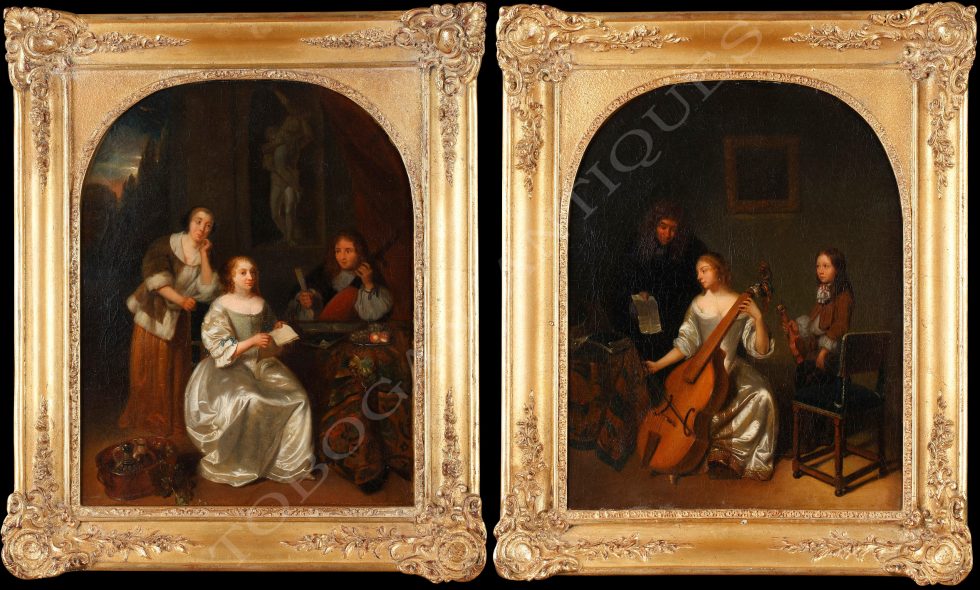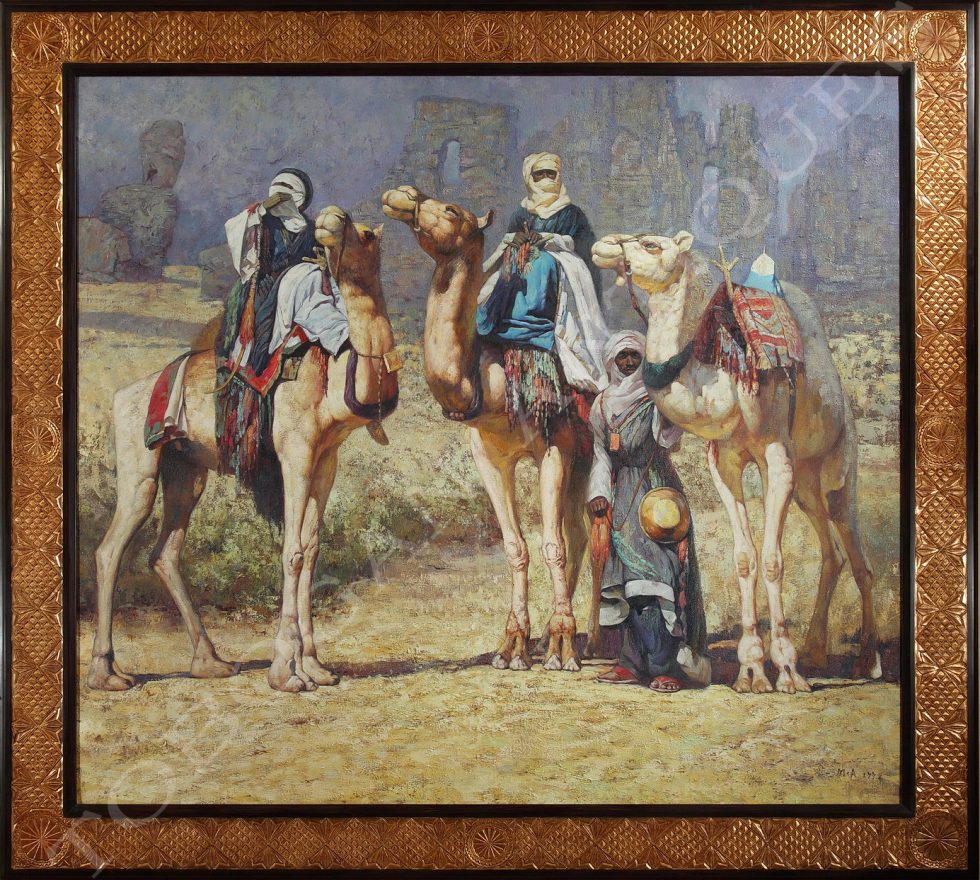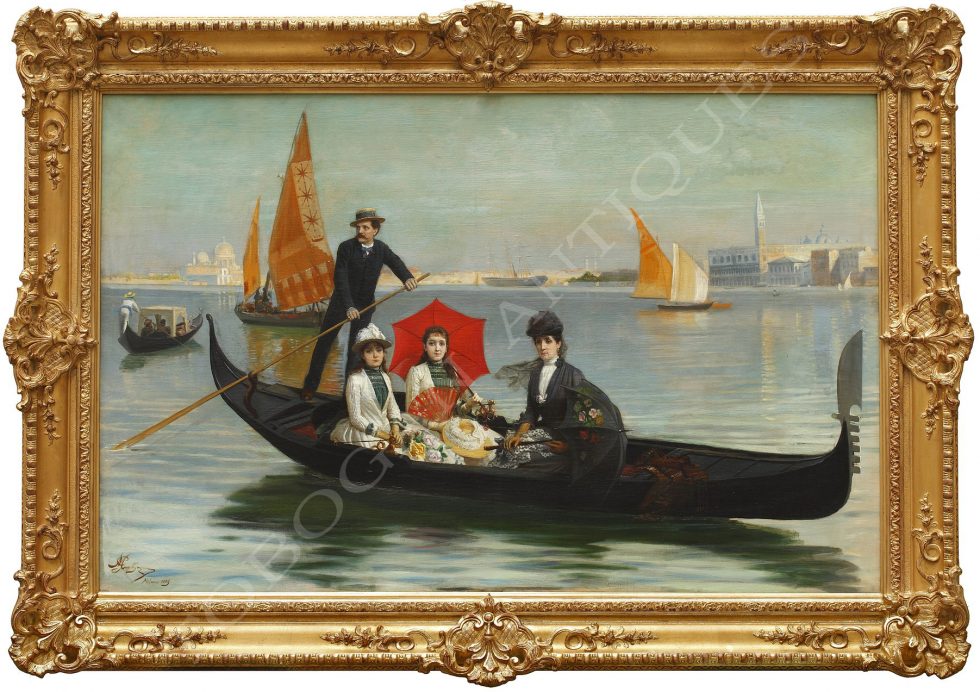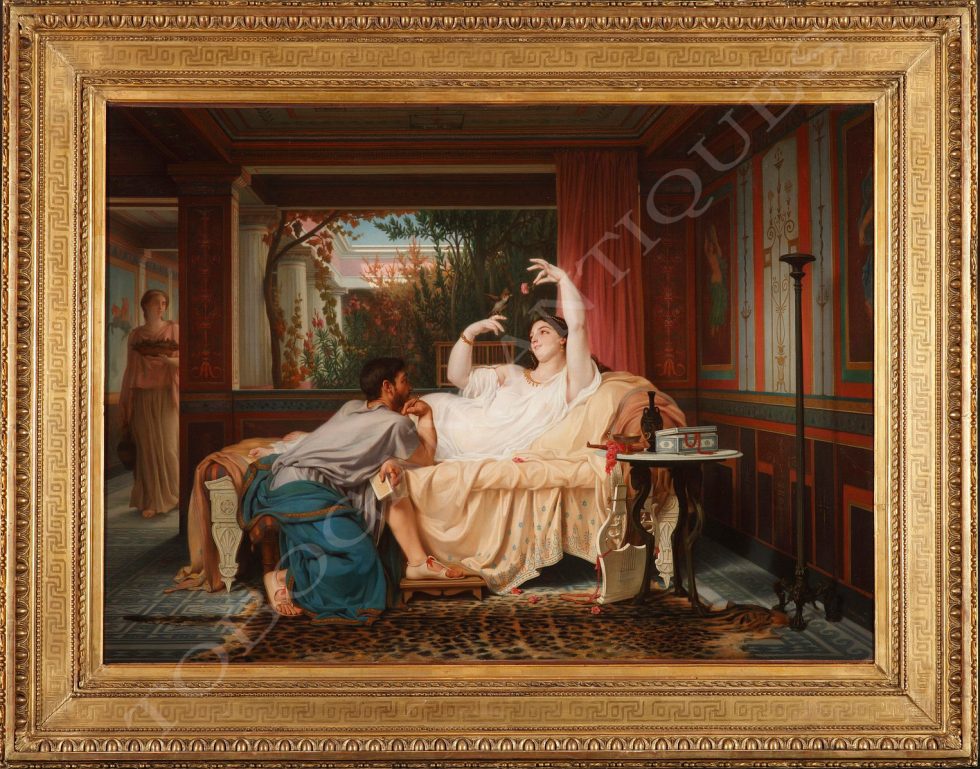ref. 800
C. Josuan
Painter
(Late 19th century)
“The three sisters”
Inscribed Cecilia Josuan, Colegio de N. S. del Huerto, Buenos Aires, 1896
Argentinian School
Height : 167 cm (65 3/4 in.) ; Width : 121 cm (47 2/3 in.)
A rare “fixé sous verre” painting using a combined technique of chromolithography for the faces and hands, and silk embroidery for the clothes and background drape. Representing three women holding each other’s hands.
Chromolithography technique uses thin paper motifs glued and varnished to integrate its support.
Commentary
Along from the rich Spanish legacy, Argentina is also very influenced since 19th century by European culture, notably Italian. Traces of American Indian culture are harder to find than in the other Latin America countries. During 19th century, with the National pride appears Argentina specific cultural themes. The Gaucho character, keeping the cattle in the Pampas, is recurrent in literature and particularly in poetry: Fausto (1866), by Estanilaslao del Campo, or Martin Fierro (1872), by José Hernandez, often considered to be an hymn to the Pampa. Painting also celebrates this genre with the works of painter Prilidiano Pueyrredon (1823-1870).
At the beginning of 19th century, painters in Latin America and particularly in Argentina are foreigners (French, Germans and British) named Costumbristas, painting folkloric landscapes and portraits much appreciated in Europe. During second part of 19th century, a national painting appears with internationally renowned painters such as Prilidiano Pueyrredon, Angel de La Valle or Eduardo Sivori. Sivori, student of Jean-Paul Laurens from 1882, is the first Argentina painter presented at the Paris Salon. Quite influenced at first by European styles and schools, these artists create, by the themes they choose to paint, a true Argentinean pictorial tradition.
Contact us
Tobogan Newsletter
If you want to be up-to-date with our new acquirings you can sign up to our newsletter.











